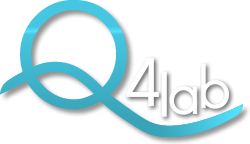Model System - Mouse Neurospheres
Neurospheres are non-adherent spherical clusters of neural cells populations that can be dissected from different area of embryo and adult mouse brain. The neurosphere assay has proven to be an excellent technique to isolate neural stem cells and progenitor cells to investigate the differentiation and potential of cell lineages.
Figure legend:
Neurospheres 72 hours after split.
Description
Neurospheres are primary neural progenitor cells that can be isolated from different area of mouse embryo brain (e.g. telencephalon, mesencephalon) at different days of gestation or from specific adult mouse Central Nervous System (CNS) zones (e.g. periventricular area, striatum, hippocampus).
To obtain neural stem/progenitors cells (NS/PCs) the tissue of interest is dissected and isolated from the surrounding tissues and then mechanically and/or enzymatically dissociated in a single-cell suspension and cultured in the presence of mitogens, such as epidermal growth factor (EGF) and basic fibroblast growth factor (bFGF). Clusters of undifferentiated cells termed neurospheres form in culture after 3-4 days or 1 week, depending if they derive from embryonic or adult neural tissues. Depending of cell density used for plating it is possible to obtain clonally derived cluster or spheres; we suggest less than 10,000 cells/ml for clone growth. Different or individual neurospheres can be enzymatic dissociated and further cultured in the presence of mitogens to generate many more neurospheres, which demonstrates self-renewal and expansion abilities. Neurospheres must be passed more times in suspension to obtain a culture composed by a mix of NS/PCs and cleaned from differentiated post-mitotic citotypes. Because of the limited proliferative ability of neural progenitor/precursor cells, neurosphere can be maintained in culture for a limited number of passages; after 10 passages we observe senescence, mortality and loss of differentiation ability.
Neurosphere assay allows to isolate NS/PCs without using cell-surface markers or morphological phenotype and evaluate the potential of a cell to behave as a stem/undifferentiated cell when removed from its in vivo niche. Neurospheres can also be differentiated in the absence of mitogens, either as whole neurospheres or dissociates, to demonstrate their multipotency through the production of neurons, astrocytes and oligodendrocytes. Different protocol exist that allow to differentiate spontaneously NS/PCs in all three neural type in the same time or to specifically differentiate a particular neural phenotype ( e.g. adding PDGF in differentiation media push cells toward neuronal differentiation, CTNF promotes astrocytes differentiation while T3 enhance oligodedndrocytes specification).
We are using this system to analyze the effect of the ectopic expression of developmental genes on the proliferation, survival and differentiation of neural progenitors and their implication in neurodegenerative disorders.
Validation info
This model system was used to obtain functional data on wt and mutant mice published in a peer-reviewed article.



